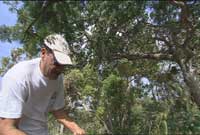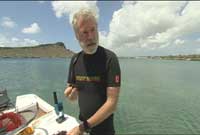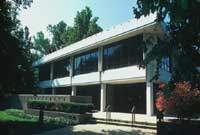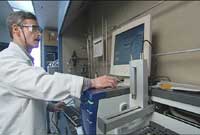Curacao - The Science

Local Bio-Exploration
In 2000, a study by Conservation International declared the Caribbean as one of the world's biodiversity "hot spots" - areas rich with flora and fauna of unique qualities. Curaçao, in spite of its arid terrain, is surprisingly biodiverse. Biologist John DeFreitas of CARMABI (Caribbean Research & Management of Biodiversity) is undertaking extensive "bio-exploration" of Curaçao to establish a catalog of the island's 500-plus plant species. About 100 of the island's plants exhibit bacteria-fighting properties.

Biologist John DeFreitas
To date, DeFreitas' study has shown some promising results. A number of plants, including Eugenia and the Divi Divi tree, have shown strong activity against bacteria. This base-line science could help other researchers in developing modern medicines based on the power of these ancient roots, stems, and leaves.
Dolphi De Brot, also from CARMABI, worries that development of the island will wipe out this biological treasure chest before they can be studied.
View video: Dolphi De Brot.
American Medical Research

Dr. Bill Gerwick
In the early 1990s, American researcher Dr. Bill Gerwick received formal permission from Curaçao to work with CARMABI to try to develop modern medicines from natural substances. In December of 1991, he first harvested a blue-green algae called Lyngbya majuscula or Mermaid's Hair. Dr. Gerwick was able to isolate a chemical compound from the algae that he named Curacin A. Early clinical studies showed that it had powerful anti-cancer properties. Dr. Gerwick's initial tests with algae were promising and showed the substance to be highly toxic to cancerous cells. But is a long journey for any compound to travel from the sun-kissed waters of Curaçao to the pharmacy shelves.

National Cancer Institute
After Dr. Gerwick's lab work at Oregon State University, the National Cancer Institute of Bethesda, Maryland conducted tests on the compound. It was found that Curacin A had some solubility issues and was unstable when tested on mice. These problems were a major setback for the development of the compound into a modern drug.
The Bethesda experts said Curacin A was too unstable in animal tests. It could never become a modern medicine without further scientific refinements.
Today, the hope for future development of Curacin A resides in snowy Pittsburgh with Professor Peter Wipe at the University of Pittsburgh. He and his graduate students are working to refine Curacin A's structure and make it a "better molecule" for further medical development.

Professor Peter Wipf
Professor Wipf and his students had to tackle the inherent problems of Curacin A. They overcame the solubility issue, making a chemical hybrid structure, much like other drug-like molecules that dissolve easily in water. They also solved the compound's sensitivity to light.
Even though the new compound based on Curacin A showed increased biological activity, it faced another problem when tested with lab animals. The compound metabolized too quickly due to the animal's enzymes, not allowing it time enough to attack the tumor.
Now Dr. Wipf and his students are studying Curacin A's stability in the body. If they can solve the problem in mice, the compound may be tested on higher animal forms.
To make a modern drug from a natural substance is a long process, one full of delays and challenges. Peter Wipf estimates that the development can take 2 to 7 years. That's not including the clinical trials that can last up to a decade before the drug is finally release to the public.
View video: Dr. Wipf.
Dr Wipf says today's scientists are looking at natural compounds, such as Curacin A for new ideas and new chemical templates. He and other scientists translate these natural substances into new molecular structures that could someday become an effective drug.
View video: Dr. Wipf.
For more information about this website.
Contact the webmaster to report any problems with this site.
New Mexico State University is an equal opportunity/affirmative action employer and educator. NMSU and the U.S. Department of Agriculture cooperating.